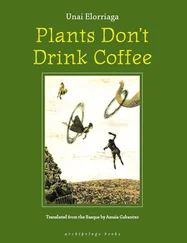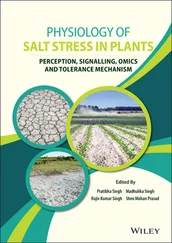Harry Ward - Disease in Plants
Здесь есть возможность читать онлайн «Harry Ward - Disease in Plants» — ознакомительный отрывок электронной книги совершенно бесплатно, а после прочтения отрывка купить полную версию. В некоторых случаях можно слушать аудио, скачать через торрент в формате fb2 и присутствует краткое содержание. Жанр: foreign_prose, Биология, Биология, foreign_edu, foreign_antique, на английском языке. Описание произведения, (предисловие) а так же отзывы посетителей доступны на портале библиотеки ЛибКат.
- Название:Disease in Plants
- Автор:
- Жанр:
- Год:неизвестен
- ISBN:нет данных
- Рейтинг книги:5 / 5. Голосов: 1
-
Избранное:Добавить в избранное
- Отзывы:
-
Ваша оценка:
- 100
- 1
- 2
- 3
- 4
- 5
Disease in Plants: краткое содержание, описание и аннотация
Предлагаем к чтению аннотацию, описание, краткое содержание или предисловие (зависит от того, что написал сам автор книги «Disease in Plants»). Если вы не нашли необходимую информацию о книге — напишите в комментариях, мы постараемся отыскать её.
Disease in Plants — читать онлайн ознакомительный отрывок
Ниже представлен текст книги, разбитый по страницам. Система сохранения места последней прочитанной страницы, позволяет с удобством читать онлайн бесплатно книгу «Disease in Plants», без необходимости каждый раз заново искать на чём Вы остановились. Поставьте закладку, и сможете в любой момент перейти на страницу, на которой закончили чтение.
Интервал:
Закладка:
It is, of course, beyond the scope of this book to go into the different varieties of soils, their structure or arrangement, and the chemical nature of their constituent rocks and the débris mingled with the latter. For the same reason I must pass over the curious properties of soils in relation to the solutions they yield to water in contact, the manner in which they retain some of these solutions and allow others to pass easily, and the remarkable double decompositions which go on in them. Moreover, I must assume as known the chief physical properties of ordinary soils with respect to the phenomena of capillarity, absorption of heat, action of frost, and so forth.
But all ideas as to the nature of soil based merely on the study of its chemistry and physics are misleading, and it is in just the establishment of this truth that modern discoveries in Agricultural and Forest Botany have played so important a part.
From the facts that organic débris is found chiefly at the surface of the earth, and that the smallest particles are held in suspension by the water near the surface, it is comprehensible why such organic remains abound in the upper parts of the soil, where the rootlets with their absorbing root-hairs are also found, because they must have oxygen. The rule is, therefore, that an ordinary soil consists of upper strata, rich in organic materials and in oxygen, and a subsoil, poorer in these substances.
Among these organic materials are countless myriads of living beings, especially fungi and bacteria, which require oxygen and organic materials for their subsistence, and it depends on the open or close, moderately moist or damp, warm or cold nature of the soil, and on some obviously connected factors, how far down these aërobic organisms can thrive. As we go deeper down they become fewer and fewer, and gradually disappear, and (neglecting certain anaërobic bacteria of putrefaction) they are rarely found in marked abundance more than a few inches below the surface soil.
These aërobic fungi and bacteria are the great agents of continued fertility of a soil, and it is they which, living and multiplying in the moist and well-aerated warm interstices of a rich open soil, carry out the useful destruction of organic matter, breaking it up into mineral and gaseous bodies, which are then dissolved in the water bathing the root-hairs or escape into the atmosphere. In this work of destruction they are aided by the oxygen of the air and the solar heat: their own fermentative action is also accompanied by a marked rise of temperature, and the carbon-dioxide and other products of their activity all go to complicate the chemical changes going on in the soil around the roots.
Duclaux has calculated that Aspergillus niger , a common mould fungus, can break down organic substances, such as carbohydrates, at such a rate that a metre cube of the fungus would decompose more than 3000 kilogr. of starch in a year, and this may serve as an example giving some idea of the possibilities in soil.
Analyses of waters containing large quantities of organic matter, as they enter such open soils as those referred to, compared with the drainage water after passing through the upper strata, show that the carbonaceous and nitrogenous materials are broken down to more or less completely oxidised simpler compounds, and that the following chief changes result. The ammonia and some other nitrogenous bodies remain behind in the soil, as also do the phosphoric acid and much of the potash; whereas large quantities of nitric and nitrous acids, together with much sulphuric acid, chlorides, and calcium salts pass away in the drainage. These facts are obviously highly important in agriculture.
Experiments on sewage farms have shown also that the upper soil retains most of the bacteria of the sewage. Koch found at Osmont, near Berlin, that whereas the different sewage waters contained numbers so enormous that each cubic centimeter probably held 38,000,000 germs, the different drainage waters held only 87,000 per c.cm.; and the whole process of water-filtration through sandy soils depends on these well-known facts.
Recent experiments in connection with soil-filtration, however, bring out the further facts that the oxidations which organic matters undergo in the soil—and without which they are useless to the higher plants—are enormously enfeebled if the upper layers of soil are sterilised, so as to deprive them of the myriads of aërobic bacteria, fungi and yeasts which they normally contain, and there can no longer be any doubt as to the importance of the biology of the soil in connection with the preparation of materials suitable for absorption in solution by the root-hairs of agricultural and other plants.
The researches of the last ten years have brought to light a long list of forms, comprising yeasts, such as Hansen's Saccharomyces apiculatus , fungi and bacteria which live and grow in the soil, finding their water and food supplies in the interstices, and under conditions which we now know to be very diverse. They are usually more numerous, in species and individuals, in cultivated farm and garden soils than in woods, prairies, and untilled lands; but the geological nature of the strata, the closeness and otherwise of the soil, its damp or dry character and its average temperature (which depends on many things besides latitude or altitude) and other factors co-operate to rule their distribution and numbers. The fact that cultivated land is so well supplied with manures, air, etc., is of great importance in relation to their relative abundance there, and it is extremely probable that the use of artificial manures lessens their numbers considerably as compared with land on which stable and other animal manures are employed.
A list of the soil-bacteria which have been isolated and more or less carefully cultivated and examined would comprise about fifty species; but it is certain that, as at present classified and named, many more species are to be discovered in any ordinary soil.
The fungi are apparently even more numerous than the bacteria, and we may rest satisfied for the present with the general statement that the life-actions of the myriads of individuals of these organisms in the soil completely alter the question of soil-water as understood by the last generation of agriculturalists.
But there is another aspect of this question of soil-organisms which has grown in importance of late to such an extent that we are more than ever justified in regarding the biology of soil as far more vital to the interests of the plant than its physical or chemical properties. With many of the fungi in the soil the roots of plants have to compete—just as plant competes with plant—for water, salts, and other food-materials. The toadstools which are so conspicuous in fields and forests spring from mycelia which ramify in the ground, and are busily breaking down the remains of other organisms, and just such fungi are known to store up relatively large quantities of salts of potassium and phosphorus—the very salts which are so valuable to crops and occur so sparingly in most soils, but which the extensively spread fungus mycelia can gradually accumulate. Some of these fungi, moreover, are more active in their antagonism, and actually attack and pierce the roots as destructive parasites, but I pass these by for the present, as they form the subject for further consideration when we come to the diseases of plants.
It is obvious that the competition of fungi with root-hairs for mineral salts, oxygen, etc., may be at times acute, and it is extremely probable that cases of so-called sterility of soil, where a particular soil is found unsuitable for a crop, may sometimes be due to this over-competition.
The researches of recent years, however, and especially those of Frank, Winogradsky, Hellriegel, and Stahl, have brought to light a series of relationships between certain of these soil-organisms and the higher plants which place the matter of soil-biology in quite new lights.
Читать дальшеИнтервал:
Закладка:
Похожие книги на «Disease in Plants»
Представляем Вашему вниманию похожие книги на «Disease in Plants» списком для выбора. Мы отобрали схожую по названию и смыслу литературу в надежде предоставить читателям больше вариантов отыскать новые, интересные, ещё непрочитанные произведения.
Обсуждение, отзывы о книге «Disease in Plants» и просто собственные мнения читателей. Оставьте ваши комментарии, напишите, что Вы думаете о произведении, его смысле или главных героях. Укажите что конкретно понравилось, а что нет, и почему Вы так считаете.












